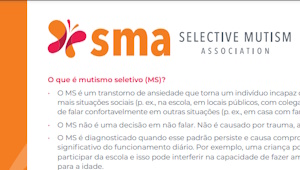Online Library
SM Special Education Process
The Special Education Process: What Do I Need to Know?
The term, “special education,” often elicits concern and hesitancy from parents, because in past years it has carried some negative connotations. However, “special education” today refers to the process by which children with specific needs who attend public schools receive the support and services necessary to make progress in the general education curriculum. This may include physical needs, social-emotional needs, mental health needs, needs related to learning skill deficits, or others.
What laws are related to the special education process?
The Individuals with Disabilities Education Act (IDEA) is a federal (national) law that requires public schools to provide Free and Appropriate Public Education (FAPE) to students with disabilities. This means that children from birth through the age of 21 who qualify are entitled to receive support and special education services to meet their needs. The goal is to ensure that students with disabilities are prepared for independent living, employment, and/or further education.
IDEA requires that schools participate in Child Find, which is the process by which students with disabilities are evaluated and identified. Schools are required to evaluate any students for which they have a reasonable amount of information indicating that the student may have a disability. This may include input from parents and teachers, as well as records of the child’s performance and functioning in school.
The Rehabilitation Act of 1973, Section 504 is another federal law which describes protections for people with disabilities. It states, “No otherwise qualified individual with a disability in the United States… shall, solely by reason of her or his disability, be excluded from the participation in, be denied the benefits of, or be subjected to discrimination under any program or activity receiving Federal financial assistance….” The two purposes of Section 504 are to remove barriers for students in school, thus allowing them to access their educational environment, and to prevent discrimation against children and adults with disabilities in programs or activities that receive federal funding.
For more information about the differences between IDEA and 504, check out Understood For All, Inc.’s guide to children’s rights, Which Laws Do What?
What does the evaluation process encompass?
Upon entrance into a public school or at any time during school, a child suspected to have a disability can be referred for a full and individual evaluation. The parent, teacher, or other individual may make the referral to the school district. To request an evaluation for your child, submit a written request to your school’s principal, guidance counselor, or school psychologist (contact your school to find out who specifically handles these requests).
Once a parent or guardian provides consent for a special education evaluation, the school district has 60 calendar days to complete this evaluation and send you a written report summarizing the results. Of note, some states may have shorter timelines than this. They will gather information from a number of sources, which may include: standardized testing (this may include IQ testing, academic achievement testing, speech and language assessments, or other tests), informal assessments, rating scales and input forms completed by you and/or the child’s teachers, and/or observations of the child in the school environment. The goal of the evaluation is to determine if your child qualifies for special education services within the district. Once the evaluation is complete, you are entitled to a meeting with the evaluation team to discuss the results and recommendations.
What happens if my child qualifies for special education?
According to IDEA, a child must meet two criteria to qualify for special education: 1) they must demonstrate a delay in skills compared to their peers in one of 13 specific categories, and 2) this delay requires that they must receive specially designed instruction in order to access the general education curriculum. Specific qualification criteria regarding what constitutes a delay and what requires specially designed instruction varies from state to state and district to district. If your child does qualify for special education services, they will receive one of 13 disability classifications, which are outlined in IDEA. The classifications that are most often used for students with selective mutism are:
- Other Health Impairment: This is a classification for students who have a chronic or acute medical condition that results in limited strength, vitality, or alertness; this then impacts a student’s alertness to their educational environment. Some diagnoses that might be included in this category are selective mutism, attention deficit hyperactivity disorder (ADHD), epilepsy, or a heart condition.
- Speech and Language Impairment: This is a classification for students who demonstrate delays in speech or language skills, including social language skills, which impair their performance at school. Having selective mutism alone may be enough to receive this classification, depending on the state/district. In addition, if your child has other speech or language delays (such as difficulty producing sounds, known as an articulation disorder), they may also qualify for this classification.
- Emotional Disturbance: Students who qualify under the emotional disturbance category display one or more of the following characteristics over a long period of time and severity is such that it impacts his/her educational performance:
- An inability to build or maintain satisfactory interpersonal relationships with peers and teachers.
- Inappropriate types of behavior or feelings under normal circumstances.
- A general pervasive mood of unhappiness or depression.
- A tendency to develop physical symptoms or fears associated with personal or school problems.
What is an Individualized Education Program (IEP)?
Once your child receives a special education classification, they will also receive a case manager. This is likely a special education teacher or speech-language pathologist (SLP) who will be the “point person” for your child’s school experience. The case manager will create an Individualized Education Program (IEP) for your child with the help of the IEP team, which will include: your child’s teacher, you, and a representative of the school district (this may be the principal, the supervisor of special education, the guidance counselor, or someone else), as well as any therapists or service providers who do or will work with your child (i.e., speech-language pathologists, occupational therapists, social worker, etc). The IEP is a working document that can be re-opened and revised whenever there is a need. It will include information about your child’s performance and functioning at school, specific goals they will be working on at school, specific ways these goals will be measured, and specially designed instruction that can be implemented throughout the school to assist them in meeting these goals. It will also include any testing accommodations that your child may need. For a list of specially designed instruction that may be useful, please see SMA’s Educator’s Toolkit.
Once the Evaluation Report is issued, the school has 30 calendar days to create an IEP for your child and hold an IEP team meeting to discuss and implement it. At the IEP meeting, you will be asked to sign a Notice of Recommended Educational Placement, which is your agreement to the plan that was set up in the IEP. You can revoke this consent at any time by submitting your request in writing to your student’s case manager.
What happens if my child doesn’t qualify for special education?
If your child does not meet the qualification criteria for one of the 13 classifications under IDEA, you can explore the possibility of a Section 504 plan. Section 504 plans are for students with diagnosed medical needs, which substantially limit one or more major life activities. A 504 plan specifies strategies and accommodations that students may need in school as a result of their diagnosis. The Section 504 plan cannot modify the existing curriculum, but it can outline accommodations for the student. Additionally, some school districts may allow students to receive related services (i.e., speech and language therapy, occupational therapy, social skills groups, etc) as part of the Section 504 plan.
What if my child doesn’t attend a public school?
If you choose to send your child to a non-public school, by law, you also give up your right to FAPE, which means that non-public schools are not legally required to provide an IEP or any related services or specially designed instruction. However, some non-public schools will create “service plans” for students with disabilities and may still provide some of the services that students are eligible for in public schools. Contact the non-public schools you are considering for your child and ask what the process is for students with disabilities and what supports and services are available. Where can I find additional information?
www.understood.org
www.wrightslaw.com
https://www.specialeducationguide.com/pre-k-12/what-is-special-education/the-special-education-process-explained/
Contributed by: Emily Doll, M.A., M.S., CCC-SLP and Taylor Hicks-Hoste, Ph.D., LP, NCSP




